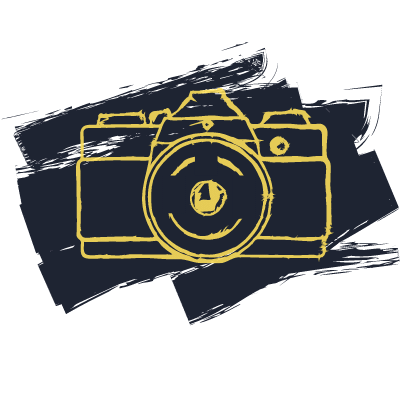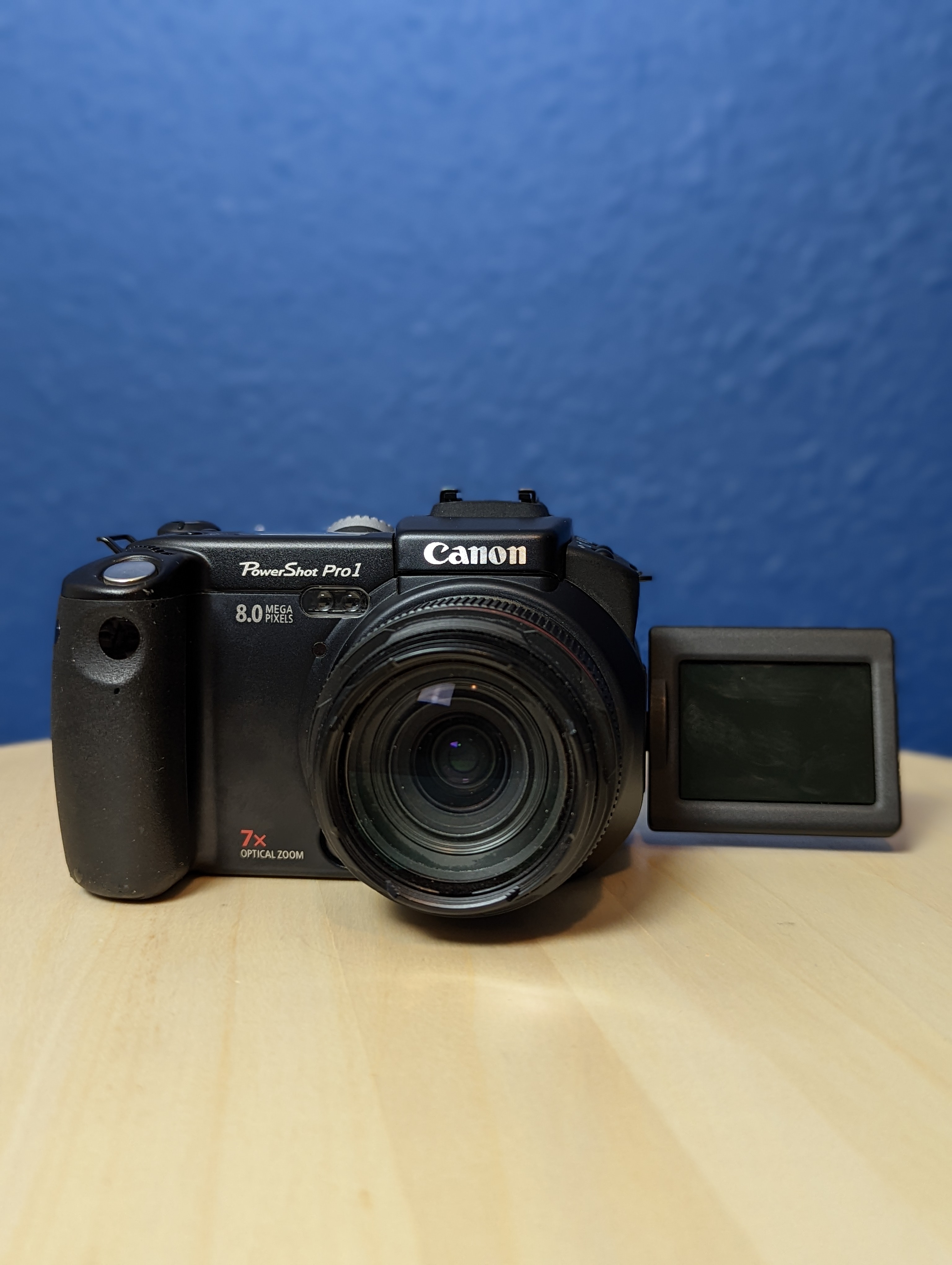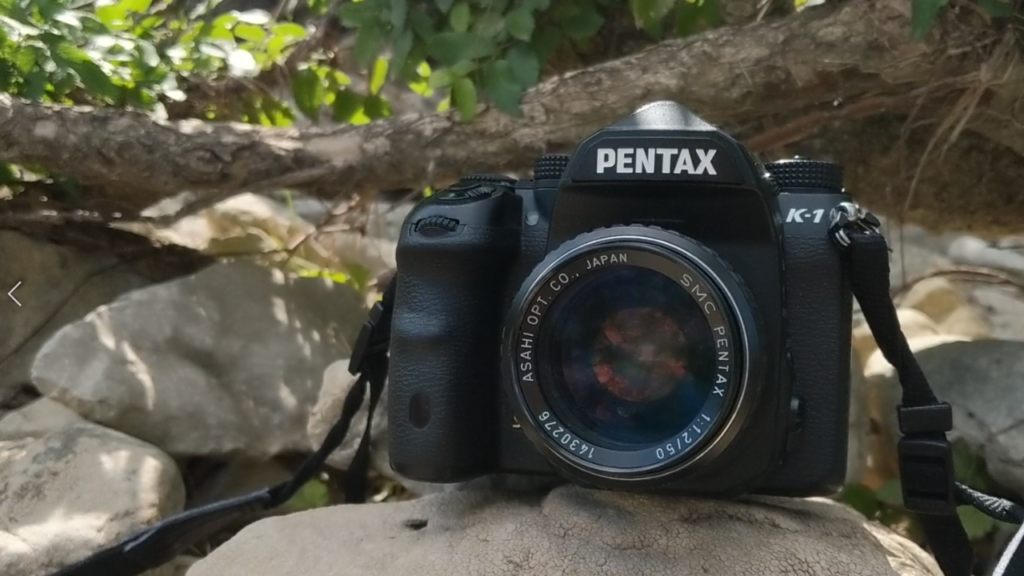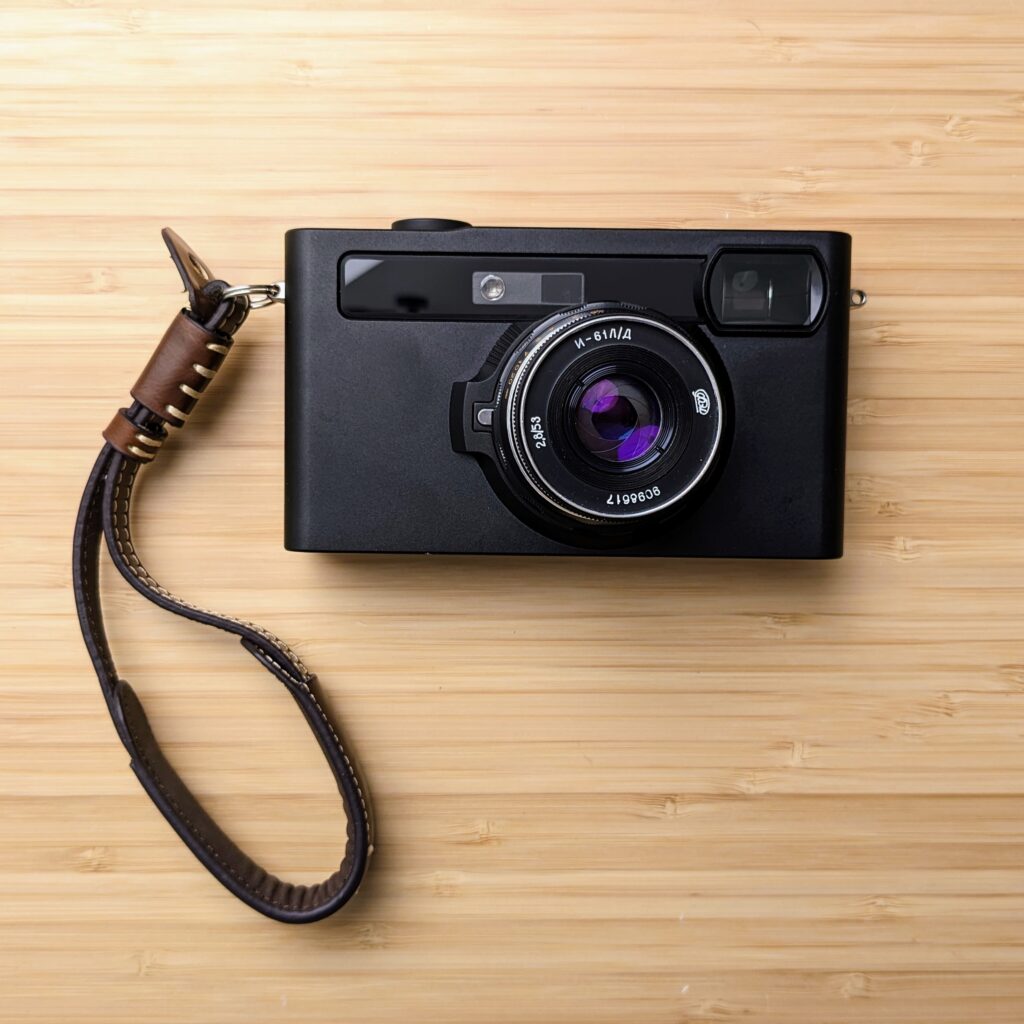The Canon PowerShot Pro1 may not look like much from the outside, but packs a serious punch in terms of features and image quality on the inside. It features full manual modes including manual focus, flash support, a built-in ND filter and more. If you can grab it for around $50-70 USD I think it makes a great compact travel or snapshot camera for just about everything.
What is the Canon PowerShot Pro1?
The Canon PowerShot Pro1 is a fixed lens enthusiast bridge camera released in 2004. It features a 28-200mm equivalent lens and an 8mp Sony CCD sensor. If you’ve never used a bridge camera, think of it as a step between a consumer point and shoot and a traditional DSLR. Of course, that market has totally changed now with the consumer point and shoot market all but gone and mirrorless interchangeable bodies in exchange for DSLRs, but back then that’s what this cameras target market was. Either you were upgrading to try manual controls and more professional features, or you were buying a secondary compact system to compliment your DSLR setup.
Read on to hear my thoughts on the Canon PowerShot Pro1, or watch this video I made on this camera.
Build Quality
The build quality of the Canon PowerShot Pro1 is overall the best out of all my bridge cameras from that era. The plastics, buttons, screen, lens feel better than my Kodak P880, Nikon 8400 and compare closely to my beloved Sony F-828. Where the Canon beats the Sony is in better quality plastics by a smidge. However, the Sony beats it in terms of the lens build quality. They both are tied in my mind for ergonomics, with the Canon being a much smaller camera. Because of it’s small size and excellent quality, I had no issues throwing it into a small pouch in my backpack as my secondary camera on bike trips.
Fun Features
There’s a bunch of fun features thrown into the camera that are worth mentioning.
It has a fully articulating screen, which can flip out and face up, down, or even forwards. I mostly use these kinds of screens in the tilted down position to get some low level shots. The screen is tiny, and the resolution doesn’t do your photos justice, but it’s fine for menu diving and composition. You can of course use the EVF for this as well.
There’s a built-in ND filter up to 3 stops. This is a pretty premium feature in my mind, and can allow for some creative shots in a pinch when you don’t have physical filters with you or don’t want the hassle of using them.
You can manually focus the lens with a quick press of a physical button. It turns the zoom ring into the focus ring, and turning it gives you a punch-in preview to assist focus. It works pretty good!
A built-in intervalometer setting exist which is unusual for the camera’s age and type. This allows you to take extended timelapses with no additional equipment required, which is cool.
Image Quality
I said before that this camera was special, and I think it really comes down to the image quality. I am able to get consistently good shots from this camera, and that makes it a joy to use. When I say image quality I am really talking about two things: the lens, and the sensor/processor.
The Lens
The Canon PowerShot Pro1 comes equipped with a fixed 28-200mm equivalent F2.4-3.5 lens that is just delightful to use. Images are sharp across apertures and the frame. It is a small sensor and old camera, so don’t pixel peep too closely, but I don’t think the lens is the one holding it back any. And that’s a good thing to see.
Unfortunately the lens focus and zoom is electronically controlled, and it isn’t a great feeling. Zooming the lens in and out feels like it might break one day. The manual zoom punch-in focus assist is a nice touch for when you need it.
There’s a macro mode, and even a super macro mode, that lets you focus up to 3 cm. This isn’t terrible close, and I wasn’t as impressed with it as I was on my Sony F-828. You can also add a piece of glass called the Canon Close-Up Lens 500D to the adapter LA-DC58C to achieve closer focus. When you see macro shots in my gallery below, they were taken with this on the camera.
It’s also worth mentioning that chromatic aberrations are really well controlled. This can make a break a lens if they are awful, and sometimes these older cameras aren’t get. That’s not the case here, and shooting scenes with bright highlights through branches produced very minimal CA.
The Sensor
For a good image we first need good optics, but we also need a good sensor to record that light. Thankfully, the Canon PowerShot Pro1 also doesn’t disappoint here. The Sony 8mp CCD sensor here is the same one used in the Sony F-828 which I love, but the Canon has the more typical RGB color filter array on it. The sensor combined with the processor puts out really nice colors out of the camera. While I do edit my photos, I didn’t have to do any color editing on the shots out of this Canon. They were that good out of the camera.
When you choose to shoot RAW you get a surprising amount of highlight and shadow recovery. Remember, this is a 2/3″ 8mp CCD sensor from almost 20 years ago. So, adjust your expectations a little. But despite this is still very much impressed me.
Eight megapixels is also a great size. Anything below starts to get a little tricky to display at large sizes or crop in. Though, they may begin to be less of a problem nowadays with all the great upscaling software out there. It’s plenty big for the internet, and images look sharp and honestly indistinguishable from larger sensor/more megapixel cameras.
Final Verdict
Shooting with the Canon PowerShot Pro1 is a wonderful experience. I didn’t have high expectations going in, preparing to have a good experience based on what I had heard but nothing more. Instead, I am honestly blown away by what this little inexpensive fixed-lens camera is capable of. The files are reliably sharp regardless of aperture used, with plenty of latitude to edit in post. I didn’t have to worry about bad lens coatings or design giving unfixable chromatic aberrations or terrible flare. It really is the experience you want from an old point and shoot: Compose and take your shot and know you got a good one.
The price of these cameras has gone up over the last few months, but you can still find a deal on one if you’re patient. And with most old digital cameras, the prices go in waves. If it’s at a high point, wait and observe over a few months and see if it goes down. I wouldn’t pay over $100 for one, since that puts you in compact 10mp CCD DSLR territory with a lens attached, which I think may even be more fun than one of these. But that’s just my personal opinion. In any case, the price seems justified for how well the Canon PowerShot Pro 1 performs.
Happy snappin’




